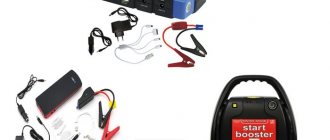Types of tinting
Films for tinting car windows differ in quality, shades and degree of light transmittance.
Darkening materials are divided into several types:
- factory tinted windows;
- glass tinting varnish;
- film with an adhesive layer and a darkening effect;
- curtains
You can make windows darker using any of the following methods. Film and varnish produced by different manufacturers differ in quality, so it is better to use well-known materials.
What tint should you use:
- 3M;
- Llumar;
- SunTek;
- SunControl;
- Armolan;
- Global;
- MTF.
When covering glass with cheap tinting, after some time cloudy inclusions, streaks and fading may appear. The choice of color depends on the personal wishes of the driver and the shade of the car body.
Applying film for tinting on car side windows
Wet the surface of the side glass and use a scraper to clean its lower part. Then lower the glass a few centimeters, wet it and also clean the rest of the surface using a scraper.
Clean the surface with the blade consistently and make sure that there are no uncleaned areas.
Next, wash the glass with a hard sponge and wipe dry using a rubber pad. Wipe the edges of the glass with a napkin. Moisten and wipe the glass again with a rubber pad.
- Before applying the tinting film, wet the glass generously.
- Then it is necessary to remove two-thirds of the liner protecting the adhesive layer from the workpiece and moisten the adhesive surface. It is convenient to carry out this operation on the rear window of the car by placing the pattern with the adhesive layer facing outwards.
- It is better to cut off the excess liner removed from the workpiece before applying the tint film.
Wet your fingers. Your fingertips must be clean, since in the process of tinting the glass you will need to touch the adhesive layer of the film.
Carefully take the workpiece and place it on the prepared glass surface.
Try to ensure that the adhesive layer only touches the surface of the glass and does not touch the seals or other surfaces.
Align the tint film along the top edge. Make sure that there are no gaps or gaps anywhere, and begin to carefully squeeze the solution out from under it.
Follow a few simple rules:
- Hold the pattern with your hand, since when you initially squeeze out the liquid, the workpiece will slide along the glass.
- Squeeze water from the center to the edges.
- Use rubber and then hard forcing. Using hard distillation, expel the liquid in the same directions - from the middle to the edges.
- Then, using a forcing tool and a hair dryer, fix the film at the top edge of the glass.
- After this, use a knife to remove the excess tinting film protruding onto the upper edge of the glass - this technology allows you to avoid leaving gaps along the upper edge.
Materials and tools
Car window tinting is a simple process that you can do yourself. However, to achieve a good result, you need to be careful and use quality materials.
Film tinting tools:
- industrial dryer;
- lighting equipment or bright lamp;
- sharp stationery knife;
- rubber spatula for smoothing tint on glass;
- a set of soft microfiber cloths;
- soap solution for tinting;
- spray with air pumping for uniform spraying of the composition.
When varnishing, you need to dismantle the part or carefully close the interior trim using rags, newspapers and masking tape. A degreasing mixture used to treat the surface before painting can harm door cards, so they must be protected with a thick cloth.
To install tinted curtains or finished glass at home you will need:
- screwdrivers;
- spanners.
All necessary clips and hooks for curtains are secured in hidden places using the included latches and screws.
When tinting car windows yourself, you should be careful not to let the liquid get into your eyes.
How to tint car side windows lessons from the pros
- It's better to start with them. The small size and absence of bends will allow you to get used to the technology at home with a minimum of waste and nerves. We begin the work by preparing a soap solution. To tint all the windows of a car (if not a bus, of course) you will need 2.5–5 liters of liquid, depending on the efficiency of your spray bottle. The recipe is simple: add 5-10 drops of liquid soap or Fairy detergent to 1 liter of water. The latter option is preferable because it cleans the glass surface well from grease.
- Let's move on to the cutting process. We need to prepare film templates according to the shape of each side glass. Or rather, front and rear, on one side. You can simply copy it from the finished layout to the other side. We use the freshly prepared solution. Apply it on the outer surface of the glass. Don't use a spray bottle that's too big, it's hard to work with.
- Depending on the size of the roll and the configuration of the window, decide how to cut optimally - lengthwise or crosswise. Now unfold and attach the roll to the glass with a margin. Don't try to make the perfect pattern right away. Measure your pattern to spare
Leave a few extra centimeters around the edges. The film will stick to a wet surface and this will greatly simplify the procedure.
If there are any small particles that do not come off, remove them with a regular blade. Just don't scratch dry.
It’s easier to remove small particles “on the wet side.” Now it’s time for the actual gluing. Peel off the protective film layer to gain access to the adhesive base. Just don’t remove it completely, limit yourself to half, starting from the top. Then moisten the adhesive part generously with soapy water. This procedure is best done with a partner (one holds, the other wets). If you are working alone, then apply the film to the outside of the window.
Remove the protective film completely, not forgetting that the adhesive part also needs to be wet.
The adhesive layer also requires moisture. Now comes the tricky part. It is necessary to insert the film into the gap between the glass, door card and seal. By the way, before starting work, check that your plastic spatula is thick enough to penetrate this gap by 1–2 cm.
Remove bubbles and air while the film is wet
Without such a tool it will not be possible to successfully complete the tinting. The main task is the same - to expel all the air and water.
It is important that the forcing is not sharp, and it must be carried out without fanaticism!
Car preparation
To perform high-quality car window tinting, you need to prepare the materials and the car in advance. A properly cleaned window will provide good visibility at any time of the day and will not become stained when pasted.
High-quality tinting is covered with a protective layer that can withstand small mechanical loads. However, a grain of sand that gets on the glass can break through the film when smoothing it with a scraper during the pasting process.
Preparing for tinting at home:
- Wash the car body thoroughly with a high pressure washer.
- Apply a soap solution to the inside of the windows and use a blade to go over the entire surface to cut off any adhered grains of sand and dirt deposits.
- Remove the decorative trim from the posts.
- Thoroughly rinse the corners and hidden cavities of the front and rear shields.
- Degrease the prepared surface.
The heated rear window should not be treated with a blade or cleaned with a hard sponge. If dirt is found, it should be washed off with window cleaning chemicals until it disappears completely.
After cleaning the windows, you need to make a pattern from the film or cover the interior panels for painting with varnish.
All work is carried out in a room with a positive air temperature. Before tinting, you can wet the floor with a spray bottle to prevent dust from being raised when walking.
We cut out the tint
Before gluing the tint onto the car, it is better to study the video instructions for cutting the tint material (at the end of the article), since all further work depends on this stage.
Cutting can be done directly on the glass of the machine, but for beginners it is better to prepare a special glass stand for this. Next, we cut out and apply the film in one of two ways.
1 way
- Cut out a rectangle.
- Wet the glass. This is necessary so that the tinting material does not “run around”.
- Place a film filter on the glass outside of the pattern machine. In the future, the film will be glued from the inside, but for cutting it is more convenient to work from the outside.
- Cut the blank along the curves of the glass with an allowance of 5-10 mm; for convenience, lower the window by at least 5 cm.
- Perform molding.
- Transfer the pattern to the stand and cut off the sharp corners a little.
- Prepare strips of film (10 cm each) and stick them on the front side to make “tails” for which you will remove the protective layer.
Method 2
- Use ready-made patterns that can be selected for a specific car model in any store.
- Cut out the workpiece, leaving a small allowance of 5-10 mm.
- Apply the installation compound to the inside of the glass and attach the pattern.
- Perform fitting and shaping.
- Glue the tails.
Separately, it is worth saying a few words about film formation. You should not do this while pasting, as in this case you will get “arrows” and unevenness. Therefore, it is better to do the molding in advance. To do this, at the cutting stage, when you attach the workpiece to the glass, you need to supply hot air to it. After this, you need to go over the film by forcing it so that the material lays tightly on the glass, taking its shape. This will make it easier for you to remove the protective layer.
After this, the most important work of applying the film begins.
How to darken a rear window
The tinting of the rear windows is no different from the windshields. To give a unique shape, a template is made and glued to a pre-treated surface.
Shields with heating threads should be passed with a scraper in a horizontal plane. This will protect the chain from damage and ensure a better fit of the tint. When carrying out work, you need to disconnect the plug going to the thread, and also remove the additional brake light.
Film template
Tinting the rear window begins with preparing a template. To do this you need:
- Cut material to fit.
- Apply to damp glass and smooth with a scraper.
- The corners are heated with a hairdryer and take the exact shape.
When making a template, it is important to lay the material with the adhesive layer facing up, otherwise, when gluing it to the inner surface, the corners will be bent in the other direction.
How to apply tint
Tinting the rear window is done using a squeegee, soap and water, or window cleaner. To protect the shelf from getting wet, you can cover it with a cloth.
Gluing tint to the rear window:
- Degrease the inside and wipe with a clean cloth.
- Inspect the surface for the presence of villi, hairs, and grains of sand.
- Treat the window with liquid.
- Tear off the transparent layer and apply the material to the glass.
- Wet the surface generously.
- Move the material in the desired direction, clearly matching the boundaries.
- Carefully remove the water using a rubber scraper.
Pasting is carried out without a hairdryer, since the template follows all the curves of the shield. After drying, you can install the brake light and return the plastic panels to their place.
Preparing everything you need
Before applying the tint, you need to prepare a clean and dry place to work, as well as a standard set of tools:
- Tinting film that meets the requirements of GOST 5727-88. Light transmittance for the windshield must be at least 75%!, for the front side windows - 70%!, for the rear side and rear - any. Typically, 4 side windows require 1 roll of film filter.
- Liquid soap (without dyes) to fix the film. It is better to use special installation compounds that do not leave streaks, or a 10-20 percent solution of any transparent shampoo.
- Plastic sticker for smoothing tint. Usually it comes complete with a film filter, but if you don’t have one, you can use any elastic plastic, rubber spatula or construction rubber eraser. Also in the store you can find special distillers for removing bubbles (chisler - for hard-to-reach places, slammer - for squeezing the edges, bloomax - for forcing out liquid).
- Scrapers for cleaning glass surfaces. 12 cm products of various shapes are best suited.
- Spray bottle (manual) for applying soap solution.
- Blade or utility knife. The latter is made of mild steel, so it is convenient to cut the film without fear of the glass being scratched.
- Soft rags, clean rags or napkins made of lint-free material.
- Industrial dryer.
If you are tinting your car yourself for the first time, it would be a good idea to purchase special camouflage markers and tapes. With their help you can correct minor errors.
You should also ensure that you have easy access to clean, cold tap water. The room should be free of insects and dust.
If everything is prepared, you can start cutting the film filter.
How to remove tint
Tinted windows become scratched and scuffed over time. In this case, you will need to remove the old film and apply a new one.
To delete, you can use the following methods:
- heat;
- soapy water;
- special chemical compounds.
Heat removal uses a hair dryer to melt the adhesive. When the film is removed, the glass remains clean and does not require additional processing.
When the adhesive layer is softened with soap, streaks and cloudy marks remain, which can be easily removed with a degreaser and a razor. When working with caustic agents, cover the panels with cloth or newspapers.
When cleaning the rear shield from glue, be careful not to damage the heating filaments. If the fiber breaks, it will require restoration by service or using conductive glue.
Adviсe
Tinting without removing the windows does not take much time. To achieve a good result and tint the car without flaws, you need to carefully inspect the shield for dirt and foreign objects.
Windshield tinting is the most difficult step due to the curves and large area. Difficulties are often caused by cutting space for mirrors and rain sensors. For convenience, you should guide the knife along the black line of the silk-screen printing and do not step beyond it.
When selecting material to match the body color, you should avoid bright red shades, which change the correct perception of colors and can confuse the driver while driving.
If certain specifications of the adhesive are observed and high-quality materials are used, the car windows will noticeably transform and retain light transmittance. When caring for tinting, do not use aggressive products or rags with hard bristles: this can lead to clouding and scratches.










